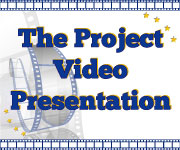basic information
THE INITIATIVE PROMOTER’S PERSPECTIVE
Knowledge should be a foundation for skills and competences necessary for regular people to live in the global world. The project’s main product “Alphabet of Tolerance” is a collective creative product. The teachers set the framework and the students have the liberty to get creative, developing skills for critical thinking and choice-making, developing strategies for overcoming obstacles, developing sense of responsibility, etc.
The project is directed towards students at age 15-18. The target language is English.
Opening people to multicultural Europe through:
- Expanding the horizon of thinking of students as citizens of united Europe
- Increasing the interest of students in the cultural heritage of their own countries and of the countries of the partner organizations
- Encouraging the tolerance towards “the different”
- Forming a civil consciousness and the belief that we are equal regardless of the skin color, religion, nation, etc.
- Involving students in activities connected to the development of products with informative and aesthetic value, necessary for the social integration of the individuals and their personal development.
Bulgarian teachers launched competitions for: drawing, essay, poem, translation, recipes for increasing the personal and social tolerance, the 10 golden rules of tolerance, Top 10 of the most tolerant and the least tolerant individuals in human history.
Methods:
- Pedagogy of cooperation and interdisciplinary approach
- Method of the "thinking experience"
- Learning by doing
- sharing and exchanging experience among the partners
- Collection-book with educational materials “Alphabet of Tolerance”
- 10 Golden Rules of Tolerance
- DVDs, paper and clay art models
- Recipe book and video clip
- Culinary show with traditional national dishes – with the participation of the students’ parents and the project partners
The Foreign Language School “Nikola Vaptsarov”, Shumen, Bulgaria applied for European Language Label in order to ensure larger visibility of the project idea, the developed products and the achieved results.
The project created a bridge towards reality, meaning that the main project product can be used for work inside and outside the English classroom for discussions, role plays, translations, etc. The project gave entirely new directions for the teaching of a second foreign language.
The collection-book “Alphabet of Tolerance” has the potential to be produced as a multilingual material if the materials are translated in other languages: German, French, Spanish, Russian, Bulgarian. Additionally, the content of the Alphabet can be expanded with new concepts and materials.
The European Language Label award recognised the efficiency and innovation of the project and its products.
Initiatives that apply for European Language Label should rely on innovation and achieved impact. The award criteria for the award should be taken into consideration and the project description should explain how it addresses them.
THE NELLIP NETWORK’S PERSPECTIVE
The "Equality in Diversity" project is in consistency with the European policies in the field of language learning because the project activities are directed towards promotion of new approaches to language teaching and learning.
THE NATIONAL AGENCY’S PERSPECTIVE
The choice of the Bulgarian National Agency, Human Resource Development Centre (HRDC), was based on the compliance of the project with the published award criteria. The project was innovative and there were proofs for solid impact achievements.
Comments on this Case Studies
Date: 2014.10.09
Posted by Mayte Martín (Ireland)
Message: Really good project. I have been involved in university seminars to prepare students to go abroad for the Erasmus year but I think it is much better to raise awareness earlier (and have fun with it).
Date: 2014.09.30
Posted by Richard Rossner (UK)
Message: This was an excellent idea for a project, especially for youngsters just getting used to the idea of a multicultural Europe. Words like \'tolerance\' and \'prejudice\' are not often discussed in school, and the competitions and other activities described here show how awareness of these issues can be dealt with in a motivating but instructive way.
